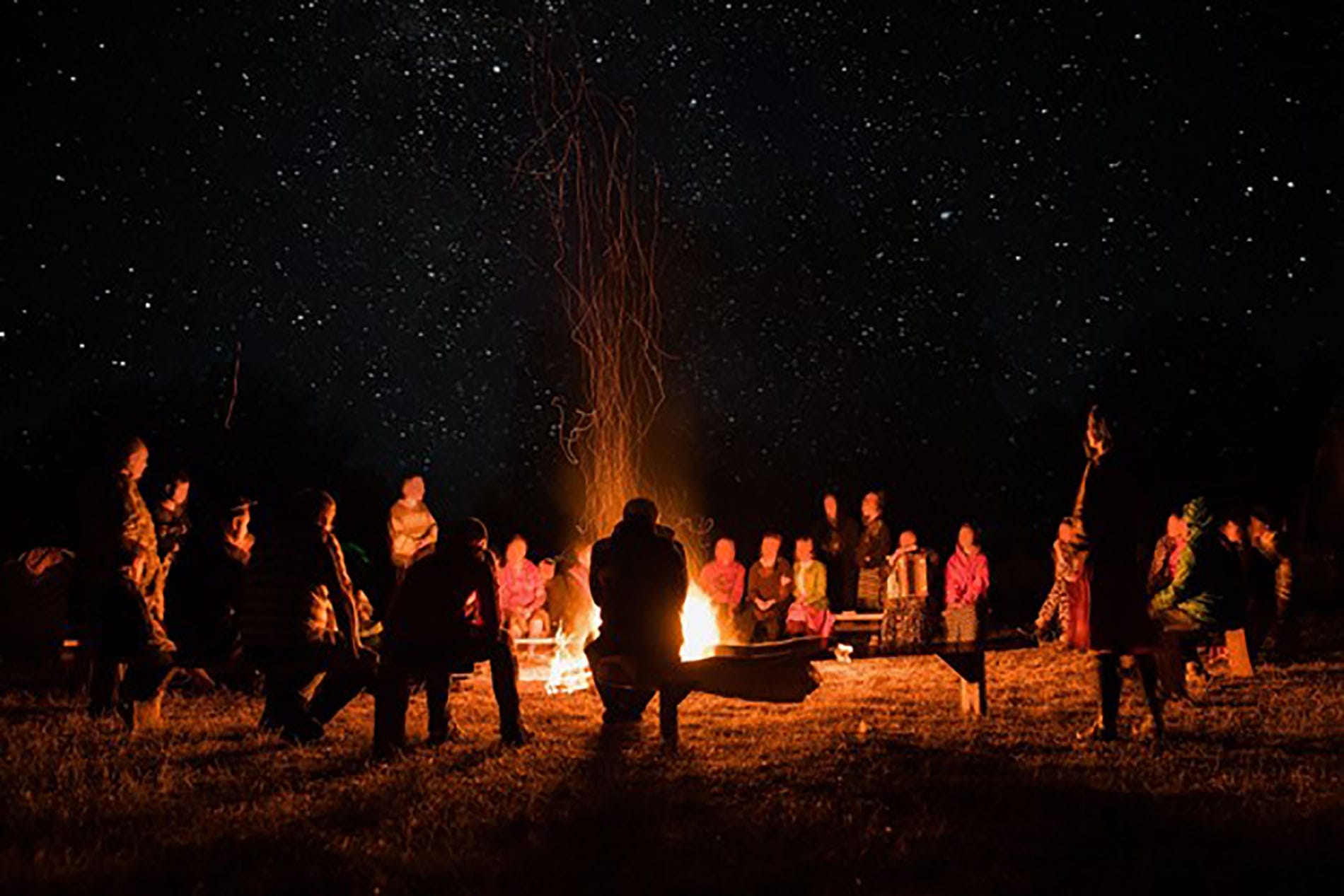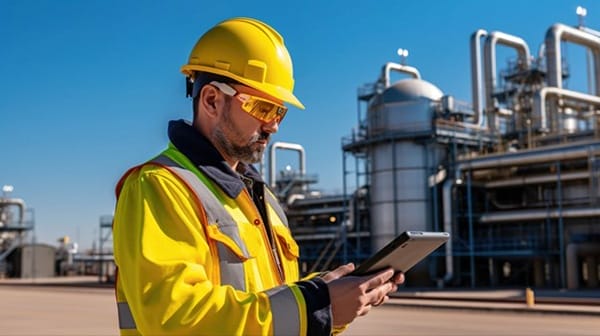Thermal energy probably isn’t something you think about every day, but it’s a fascinating part of our daily lives. That warmth we feel on a sunny day and the heat that keeps us comfortable in cold weather is thermal energy — and it’s all around us. But what is thermal energy exactly and where does it come from? Get the answers to these questions and more with this trusty guide.
What Is Thermal Energy?
Thermal energy is a form of energy within an object or system that regulates the object or system’s temperature. It’s a special type of kinetic energy that occurs when atoms and molecules make random movements. The faster the atoms and molecules move, the more energy they create and the more thermal energy they create.
We often equate thermal energy with temperature, the measurement of the average kinetic energy the particles create. This makes temperature closely associated with thermal energy.
Remember that thermal energy and heat aren’t one and the same. Thermal energy is the actual energy a substance or object’s particles have. In contrast, heat is the transfer of this thermal energy, such as the transfer of thermal energy from a stove burner to water in a pot.
Heat transfer occurs when two objects or regions have a temperature difference, resulting in thermal energy flowing from the warmer object or region to the cooler one. This process ensures thermal equilibrium and ensures even energy distribution.
Thermal energy is present in solids, liquids, and gases. In fact, thermal energy greatly influences these states of matter’s behaviors. For example, if you heat a solid, its particles energize and vibrate more vigorously. They can eventually reach a point where they break free from their fixed positions and become a liquid — what we know as melting. This transition is due to increased thermal energy within the material.
Thermal energy is not limited to natural systems. Humans can also harness and use it. Various industries use thermal energy for heating, cooling, and electricity generation. We’ll dive more into this topic later.
What Has Thermal Energy?
Every object, substance, and system has some form of thermal energy. Whether it’s a grain of rice or a celestial body, it has thermal energy to some degree. Even the invisible gases and liquids surrounding us contain thermal energy.
Is Thermal Energy Just Heat?
Thermal energy and heat are closely related, but they are not synonymous. Heat is the transfer or flow of thermal energy between objects resulting from a temperature difference. For example, the energy from the stove transferring to water in a pot is heat. As the heat flows to the water, it will eventually cause the water to boil.
In simple terms, heat transfers thermal energy, but thermal energy includes heat and encompasses much more than just heat.
Does Thermal Mean Warm?
Thermal energy is closely related to warmth and heat, but “thermal” does not exclusively imply warmth. Instead, it includes the full spectrum of temperature, from hot to cold. Thermal energy is present across all temperature ranges and is responsible for phenomena such as phase changes — solid-liquid-gas transitions — that occur across temperature changes. As such, thermal energy is not limited to the sensation of warmth alone.
Enter your ZIP Code and compare electricity rates
Is Thermal Energy Cold or Hot?
Thermal energy can be hot and cold, depending on the temperature of an object or system. When the particles within an object vibrate vigorously, we perceive it as hot. When the particles vibrate slowly, we perceive it as cold. This subjective experience of temperature is directly linked to the amount of thermal energy present in a given object. A hot object or system has a higher thermal energy than a cold object, but both have thermal energy nonetheless.
What Are 4 Examples of Thermal Energy?
Let’s explore four examples of thermal energy at work.
1. Your Morning Cup of Joe
A great example of thermal energy is something many of us drink every morning before starting the day or when we need a little pick-me-up: a cup of hot coffee.
When you pour boiling water over instant coffee grounds in a cup, the hot water’s thermal energy transfers to the coffee grounds and the cup, raising their temperatures. This results in the cup of coffee becoming a thermal energy source that can warm your hands on a chilly morning.
2. The Earth’s Core
Another example of thermal energy is in the Earth’s core. Under the Earth’s surface is the scorching hot core of molten rock and metal. The core’s intense heat is a prime example of thermal energy. This heat energy drives tectonic plate movement, creating earthquakes and volcanic eruptions, playing a crucial role in forming Earth’s magnetic field.
3. Your Vehicle’s Engine
Not only do objects and substances possess thermal energy, but systems and processes also rely on it. This leads us to another example of thermal energy: a car’s internal combustion engine. As fuel burns inside the engine, the chemical energy in the fuel converts into thermal energy. This thermal energy then powers the car.
4. Outer Space
Thermal energy also occurs in outer space. Stars, like our sun, are huge thermal energy sources. The sun’s core generates an immense amount of heat and light through nuclear fusion. The thermal energy from this process radiates outwards, providing warmth and light to our planet. This also fuels the complex processes that occur within the sun, including creating new elements through nuclear reactions.
What Are 5 Examples of How Thermal Energy Is Used?
We use thermal energy in many ways — typically more than people realize. Let’s review five ways we regularly use thermal energy.
1. Heating Homes and Buildings
When the temperature outside drops, we often turn on heaters to warm up our homes and stay cozy. This is an everyday exercise in thermal energy use. When you set that thermostat to a specific heat, the heater increases the thermal energy in its coils, increasing their temperature, and then that heat flows into the air, warming your home. While the specific process will depend on the heat your home uses — radiant, forced air, heat pumps, or even geothermal energy — the basic heat production concept remains.
2. Cooking Meals
“You may not think of cooking as an exercise in thermodynamics, but it really is. From the flavors you create by combining various spices to using thermal energy to cook, making tasty food is one big science experiment.
Speaking about thermal energy specifically, this applies as we cook our food. Say you need to boil water, so you turn on a burner. The stove steadily increases the amount of energy going to the burner you turned on, which increases its temperature. Once it’s hot enough, thermal energy flows to the pot and into the water as heat and eventually boils the water.
3. Generating Electricity
Thermal energy plays a significant role in generating electricity. For example, in a gas turbine power plant, pressurized air flows into a combustion chamber where it’s mixed with fuel. The thermal energy is then increased by burning the mixture, which creates a high-pressure gas stream that rotates a turbine to generate electrical energy.
The process may differ from other thermal power plants, such as nuclear energy. However, the basic concept remains, even in emission-free and renewable energy sources like solar and geothermal.
4. Driving a Vehicle
The internal combustion engine in traditional and hybrid vehicles is another great example of thermal energy in our daily lives. The fossil fuels and air enter a combustion chamber where a spark converts its chemical energy into thermal energy. Then, that thermal energy causes the engine’s internal components to move, creating the mechanical energy needed to turn that vehicle into a moving object that can perform useful work.
5. Creating Metal Jewelry and Other Items
Often, jewelry and other metal items go through several changes in thermal energy to come up with their final form. You first heat the metal, increasing its thermal energy until it becomes a liquid. You can then dump that liquid into a cast to form it and lower its thermal energy to slow its particles and hold the form of the cast it’s sitting in.
Is Thermal Energy Fire?
People often associate fire with thermal energy, but it’s different. Fire is a chemical reaction that releases significant thermal energy in the form of heat and light. A fire occurs when a combustible substance, such as wood or fuel, reacts with oxygen and combines with heat. To be specific, fire is a manifestation of thermal energy but thermal energy itself is not necessarily fire.
What Has the Most Thermal Energy?
The thermal energy of an object relies on several variables, including its temperature, number of atoms, and physical state. At the most basic level, more atoms and a higher temperature mean a higher thermal energy.
And when it comes to the physical state, gases tend to have the most thermal energy. The next highest thermal energy generally comes from liquids and then finally solids. The reason gases and liquids tend to have higher thermal energy is their particles can move faster and more freely than in a solid.
Understanding Thermal Energy Helps You Understand the World
Thermal energy is a fundamental aspect of our physical world. It’s ingrained into virtually everything we encounter, including the heat we feel, the energy we harness, and the universe we live in.
Understanding thermal energy allows us to appreciate the workings of nature and empowers us to harness it for practical applications like generating electricity or powering a car. The next time you soak in the sun’s warmth or cozy up by a fire, remember that thermal energy plays a key role in making that possible.
In electricity generation, thermal energy plays a big role, but it’s not the only source of electricity. Energy Savings helps people save money on utility bills and lower their carbon footprint with energy providers that use green options, such as hydroelectricity and wind turbines. Compare different electricity plans and choose the one that works for you.
Brought to you by energysavings.com
All images licensed from Adobe Stock.




